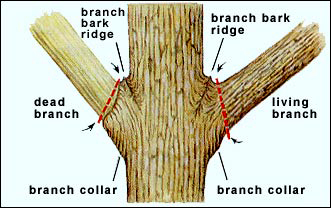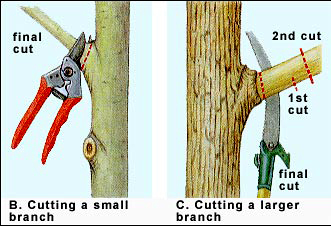skip to Main Content
Why We Prune
- Safety – removing branches that could fall or be causing an obstruction that could lead to injury or property damage
- Health – removing dead, diseased, damaged, rubbing, or insect infested wood to encourage wound closure and plant vitality
- Aesthetics – can enhance the natural form and
character of a plant and stimulate flower production
When to Prune
- Flowering deciduous trees and shrubs should be pruned immediately after flowering
- Non-flowering deciduous trees and shrubs ideally should be pruned during the dormant season
- Evergreens may be pruned after new growth is completed (usually by late spring/early summer)
- Broadleaf evergreens such as Rhododendron and Azaleas should be pruned immediately after flowering
- Perennials can be cut back late in the season when flowers and foliage have died being careful not to remove any “green” parts of the plant
Types of Pruners
- Hand pruners (by-pass type recommended)
- Loppers (by-pass type recommended)
- Pruning Saws
- Hedge trimmers are for hedges only (not recommended)
The diagrams below best describe how to prune.
- A proper prune does not damage the branch bark collar or the branch bark ridge
- Alive branches and dead branches are pruned alike
- Prune shrubs from the inside out to maintain plant aesthetics and natural shape


